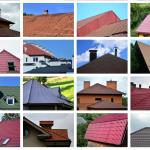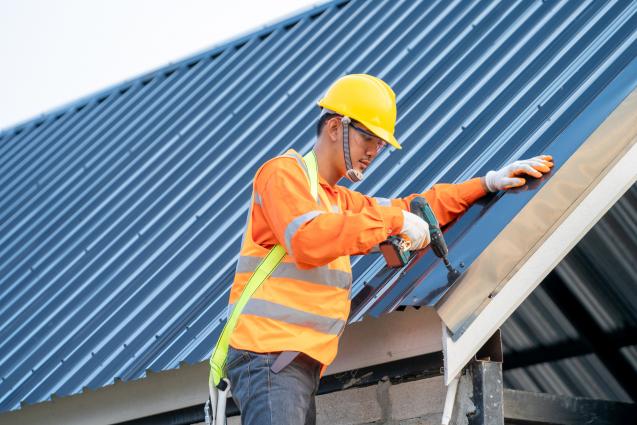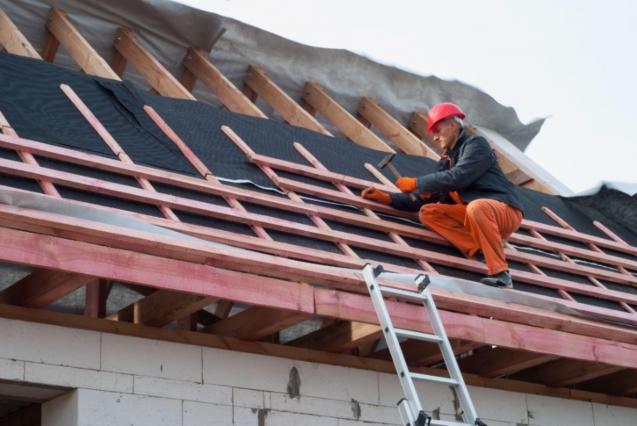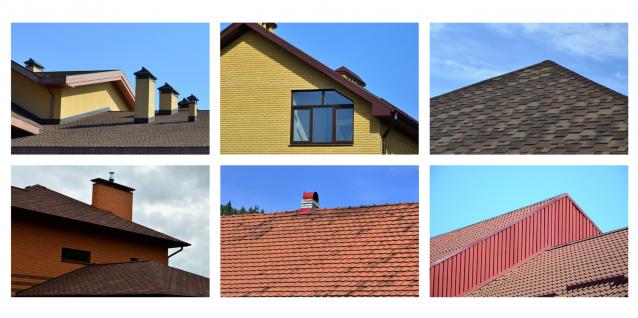
Different Types of Roofs Used in Australia - Which one is Best for Your Home?
By Sydney Roofing Contractors|August 24, 2022
Introduction
Choosing a roof for your house can be overwhelming, especially in Australia. This is because the area where you reside plays a key role in your choice. Different regions have different weather conditions that require a compatible roof type.
If you aren’t sure which roof type to settle for, here’s a look at the different roof types used in Australia.
Different Types of Roofs
Flat Roof
Flat roofs are among Australia’s most common roof types. This is because flat roofs are cheaper than other roof types and are easy to install and maintain.
The drawback to flat roofs is that there aren’t many choices of design and colours. The flat roof is only available in black, white, or grey.
Gabled Roof
The gabled roof, known as the peaked roof, originated from the Greeks but has become a trendy roof type over the years.
What makes the gabled roof popular is its cost-effectiveness in installation and maintenance. The downside to it, however, is that
it’s not suitable for areas with extremely windy conditions.
Curved Roof
A curved roof is pleasing to the eye because of its design. They are curved, as the name suggests, and conducive for coastal homes.
The benefit of a curved roof is its versatility in that it can be tailor-made to suit your preferences. It's also eco-friendly as it reduces the emission of harmful CO2.
The drawback to the curved roof is that it's expensive with high maintenance costs.
Butterfly Roof
The butterfly roof is a popular roof type because of its ability to resist harsh wind conditions. Its sleek structure makes it stable even under harsh climates. It’s designed to allow owners to draw rainwater in their water tanks, saving you the costs of gutter installation.
The butterfly roof is, however, expensive and high maintenance.
Hip Roof
The hip roof is a popular roof type in Australia because it’s structurally designed to withstand extreme weather conditions. The distinguishing feature of the hip roof is that it doesn’t have ridges.
The benefit of a hip roof is that it combines style, stability, and functionality all in one. The downside, however, is that it's expensive and uses extra materials.
Skillion Roof
Skillion roofs are mini extensions to a roof. As a result, the skillion roof is designed so that it’s not connected to any other roof area and creates the multi-level illusion of a building.
The benefits of a skillion roof are its low maintenance and easy installation process. The downside is that it’s prone to extremely harsh windy conditions.
Factors to Consider When Choosing Your Roof
The following factors should be considered before buying and installing a roof for your house:
Locality
This is probably the primary consideration. The area you are living in will determine what roof is good for your area’s weather.
Finances
Your budget will decide on your options and the type of roof you can afford. And it’s not just the roof, but also the materials required, installation crew, durability, and maintenance costs.
Regulations
Find out if your locality has some guidelines concerning roofing, particularly regarding the weather patterns of the area and the colour.
Conclusion
As a homeowner, don’t underestimate the role of the roof. It’s an investment. You want value for your money in terms of longevity, style, and stability. Contact our specialists to get in touch with a qualified roofing contractor for your installation needs.
Choosing a roof for your house can be overwhelming, especially in Australia. This is because the area where you reside plays a key role in your choice. Different regions have different weather conditions that require a compatible roof type.
If you aren’t sure which roof type to settle for, here’s a look at the different roof types used in Australia.
Different Types of Roofs
Flat Roof
Flat roofs are among Australia’s most common roof types. This is because flat roofs are cheaper than other roof types and are easy to install and maintain.
The drawback to flat roofs is that there aren’t many choices of design and colours. The flat roof is only available in black, white, or grey.
Gabled Roof
The gabled roof, known as the peaked roof, originated from the Greeks but has become a trendy roof type over the years.
What makes the gabled roof popular is its cost-effectiveness in installation and maintenance. The downside to it, however, is that
it’s not suitable for areas with extremely windy conditions.
Curved Roof
A curved roof is pleasing to the eye because of its design. They are curved, as the name suggests, and conducive for coastal homes.
The benefit of a curved roof is its versatility in that it can be tailor-made to suit your preferences. It's also eco-friendly as it reduces the emission of harmful CO2.
The drawback to the curved roof is that it's expensive with high maintenance costs.
Butterfly Roof
The butterfly roof is a popular roof type because of its ability to resist harsh wind conditions. Its sleek structure makes it stable even under harsh climates. It’s designed to allow owners to draw rainwater in their water tanks, saving you the costs of gutter installation.
The butterfly roof is, however, expensive and high maintenance.
Hip Roof
The hip roof is a popular roof type in Australia because it’s structurally designed to withstand extreme weather conditions. The distinguishing feature of the hip roof is that it doesn’t have ridges.
The benefit of a hip roof is that it combines style, stability, and functionality all in one. The downside, however, is that it's expensive and uses extra materials.
Skillion Roof
Skillion roofs are mini extensions to a roof. As a result, the skillion roof is designed so that it’s not connected to any other roof area and creates the multi-level illusion of a building.
The benefits of a skillion roof are its low maintenance and easy installation process. The downside is that it’s prone to extremely harsh windy conditions.
Factors to Consider When Choosing Your Roof
The following factors should be considered before buying and installing a roof for your house:
Locality
This is probably the primary consideration. The area you are living in will determine what roof is good for your area’s weather.
Finances
Your budget will decide on your options and the type of roof you can afford. And it’s not just the roof, but also the materials required, installation crew, durability, and maintenance costs.
Regulations
Find out if your locality has some guidelines concerning roofing, particularly regarding the weather patterns of the area and the colour.
Conclusion
As a homeowner, don’t underestimate the role of the roof. It’s an investment. You want value for your money in terms of longevity, style, and stability. Contact our specialists to get in touch with a qualified roofing contractor for your installation needs.



